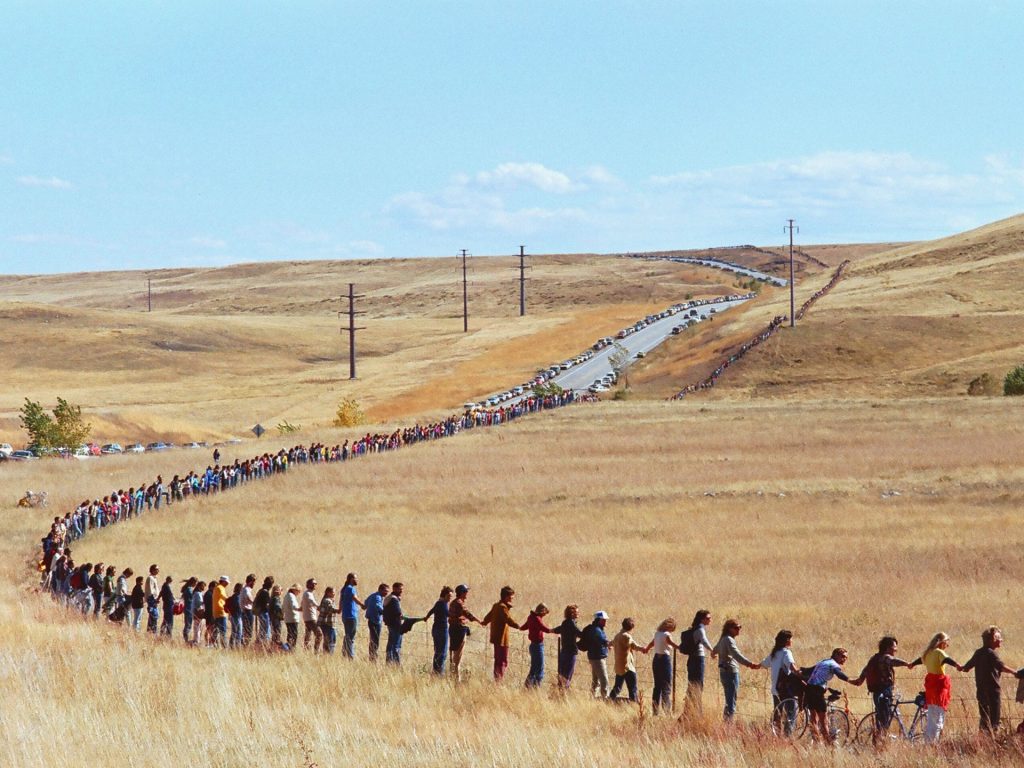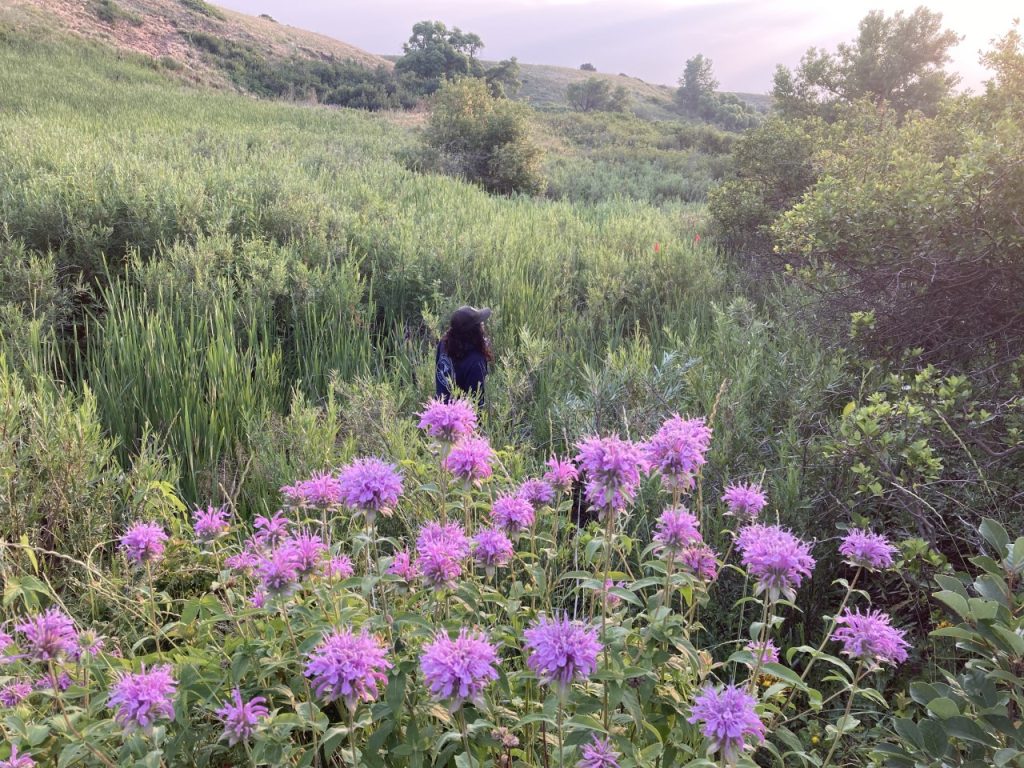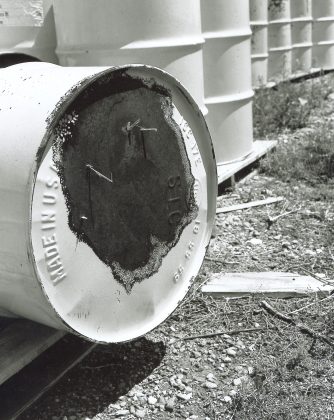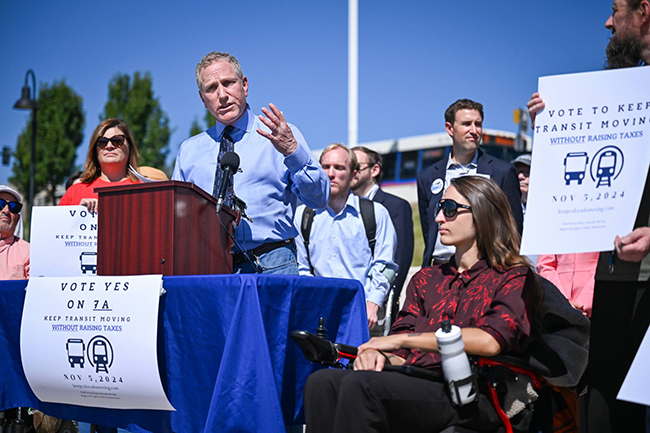The Tumultuous Tale of Rocky Flats
26 Mar 2022
Former nuclear site offers silver linings, ongoing danger
By Kate Jonuska
When nuclear processing began at Rocky Flats in 1952, the United States was in the opening salvos of an atomically charged Cold War. The government didn’t inform the public they were bringing plutonium and other hazardous materials to the site 10 miles south of Boulder to make the triggers for nuclear bombs. They then covered up their radioactive mistakes in the public’s backyard for decades, creating a 70-year history of environmental disasters, revealed secrets, and attempts at remediating both land and public trust.
“In 1957, they had their first major accident—a spontaneous fire in Building 771 that created an ‘infinity room,’” says Giselle Herzfeld, co-coordinator of the Nuclear Guardianship Collective at the Rocky Mountain Peace and Justice Center. The accident site was thus called because its radiation was off the meter on the detection equipment used at that time, and the decision to cover up the fire was the first brick in the public’s wall of distrust regarding Rocky Flats.
“The public was not informed at all,” says Herzfeld. “We weren’t aware of that first fire until their 1969 Mother’s Day Fire, which at the time, was the most expensive industrial fire [in the U.S.] to date and required two years of cleanup.”PHOTOS COURTESY U.S. DEPARTMENT OF ENERGY
The next betrayal included a discovery in 1970 that plutonium waste drums had been known to be leaking on-site since 1959, and by that time, winds had already redistributed contaminated soil throughout the Denver metro area. That year, the Boulder Workshop in Nonviolence led a five-day protest against Rocky Flats and kicked off a wave of public activism that brought together protesters against both environmental injustice and nuclear weapons. The notoriety of the site grew nationally once poet Allen Ginsberg and writer Daniel Ellsberg joined a group of 3,500 folks protesting Rocky Flats in 1978.
“That was the protest that culminated in people camping on the railroad tracks to stop the trains from coming in and out, and seventy-five people were arrested,” says Herzfeld, who notes that several of the Rocky Mountain Peace and Justice Center’s founders participated in those early protests before founding RMPJC to host their own large protest in 1983.
“We hosted the Rocky Flats Encirclement where people joined hands to encircle the perimeter of the site, a very nationally known effort at the time,” she continues. “And it eventually was public pressure and protest that led to the site getting raided and shut down in 1989.” It was also declared an official Superfund site that year.

Or at least, the area used for atomic materials production (aka the Central Operable Unit) was declared and continues to be a Superfund site. After cleanup efforts and governmental wrangling throughout the ’90s, the 5,000+ acres originally purchased as a buffer zone for nuclear operations was deemed “safe for unlimited use and unrestricted exposure” and opened as the Rocky Flats National Wildlife Refuge in 2007. While several governmental studies show that cleanup was done to the required standards, some think the standards should have been higher.
“The site is really extraordinary. It remains one of the largest intact xeric grasslands left in the United States, which is tall grass and a type of prairie habitat that’s fairly rare now,” says Sarah Metzer, a biologist and visitor services manager at the refuge, which is managed by the U.S. Fish and Wildlife Service. In addition to 11 miles of trails with opportunities for hiking, biking and horseback riding, the refuge includes habitat for the endangered Prebles meadow jumping mouse, more than 200 species of birds and a herd of elk.

“I think we’re lucky in a sense because if the site didn’t have this history, it would probably all be housing development right now,” says Metzer, who points to the transparent testing already done and says she believes the science. “Fish and Wildlife is a scientific organization. While [testing] is certainly not our expertise, we work in conjunction with other agencies, and in working with these partners, we trust the science that the testing has been done,” she says. “From the biologist’s perspective, it’s a stunning landscape that’s been deemed safe for us and for our visitors to recreate on, and safe for the animals, as well.”
Her agency provides transparent release of testing results done in conjunction with the Department of Energy and the Environmental Protection Agency demonstrating a level of plutonium deemed safe for unlimited use and exposure. Yet, public distrust about the safety of the Rocky Flats National Wildlife Refuge remains and centers around differing historical plans for decontamination.
Namely, environmental cleanup of the area was originally estimated to cost $36 billion and take 65 years, but later, a new contract promised to complete the cleanup for $7.3 billion in only 10 to 15 years. The Department of Energy saved this time and money by what RMPJC calls “cutting corners,” meaning they agreed to clean the soil in the buffer zone down to 50 picocuries of plutonium per gram, but only to a depth of three feet. Any deeper soil, the new agreement claimed, would be left intact unless it posed a reasonable chance of migrating to the surface or into the groundwater.
At present, RMPJC and other environmental groups think the whole refuge should be avoided for safety and that hiking, biking and horseback riding could definitely disturb that deeper soil. They’re also fighting U.S. Fish and Wildlife’s plans to build a greenway path from its other property at Rocky Mountain Arsenal through the Rocky Flats refuge and eventually all the way to Rocky Mountain National Park.
“A lot of the plans for the refuge and greenway are contingent on everything staying exactly the same when the reality of threats like climate change make it very unstable,” says Claire O’Brien, RMPJC administrator. She uses the example of a disaster like the Marshall Fire hitting Rocky Flats—the Superfund site or the refuge—and spreading old radioactivity into the atmosphere or the water supply. “That danger should be continuously talked about and brought up. The danger of Rocky Flats isn’t over.” ✷
To learn more, visit Rocky Mountain Peace and Justice Center at rmpjc.org, where you’ll find a documentary film called “The Encirclement.” Local podcast Changing Denver dedicated an entire season to Rocky Flats. Visit changingdenver.com to listen. For the U.S. Fish & Wildlife Service’s coverage of Rocky Flats, visit fws.gov/refuge/rocky-flats.
















